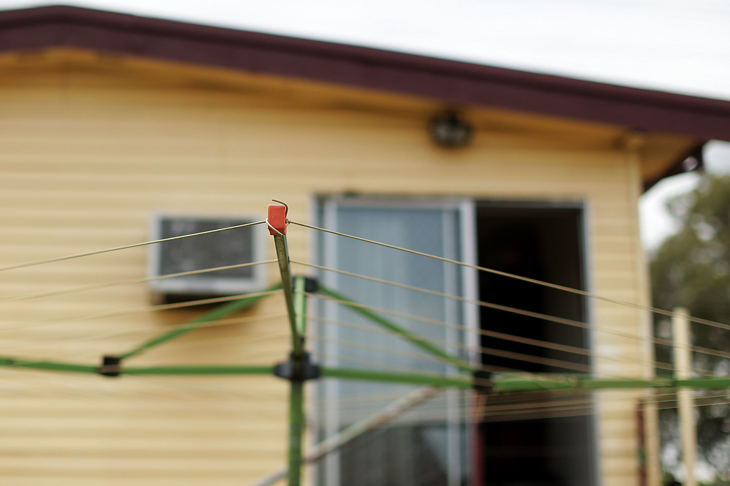NIMBYism is a term of unclear origin. The phrase ‘not in my backyard’ apparently first appeared in print in the Christian Science Monitor, a fact I just love. Initially, it had a narrow meaning, referring to a community’s understandable reluctance to have dangerous facilities located near their dwellings – think toxic waste dumps, in particular.
But it quickly morphed into a term of derision used by progressives to ram unwelcome and unsightly developments down the throats of those who have the temerity to prefer their neighbourhoods to retain their core features and character.
The uncontested argument is that well-heeled residents in leafy suburbs who object to the construction of multi-storey, dogbox apartment buildings located on every corner of their neighbourhood should be ignored. Their complaints can just be filed away; compulsory acquisitions can be used if required.
These left-wing types have even dreamt up a new term – YIMBism – yes, in my backyard. Oh, please! Mind you, I’m yet to see too many examples of YIMBism, with protestors out on the street passionately chanting away: what to do want? more high-rises/ when do we want them? now.
Let me put another spin on NIMBYism and suggest that protecting the nature of your local neighbourhood is a perfectly legitimate reaction to maniacal town-planners and lefty zealots. When you buy a property, it’s not just the actual dwelling you are purchasing, it’s also its location and the character of the precinct in which it is located. In other words, the property rights extend beyond the boundaries of the residence.
Of course, no one expects a neighbourhood to remain unchanged. There will always be changes, improvements even. But there is a completely reasonable expectation on the part of residents that the neighbourhood will alter only at the margin and its essential character – be it large family homes, cheek-by-jowl terrace houses or mixed accommodation – will stay relatively unchanged.
In the past, these broader property rights were supported by legally binding restrictive covenants that limited the type and number of developments that could occur in a neighbourhood. While these are no longer common, there are still plenty of examples of planning restrictions that meet the preferences of most residents.
In the Noosa region, for example, there are strict limits on apartment developments, with high-rise buildings not allowed. In nearby Peregian Beach, no apartments developments are permitted, with the rule being one dwelling per lot. In many parts of the Mornington Peninsular in Victoria, there are restrictions on the type of dwellings that can be constructed. Indeed, there are many, many examples of these restrictions right across the country.
The real problems arise in the big cities where newly arrived migrants tend to settle and there is clearly insufficient housing to accommodate the surge. Of course, an obvious solution is for governments to restrict the annual migrant intakes to ensure that there is some balance between demand for new housing and supply.
The point is often made that it’s the federal government that sets migrant numbers and the rules by which they enter. But it’s the state governments – and, it has to be admitted, local governments – that are responsible for planning and other housing-related regulations.
Having said this, in recent times, state governments have been wholly supportive of the migration policies of the federal government. There is scope for state governments to influence this policy, but the reality has been most have sought additional numbers under state-based visas. Any practical problems associated with massive numbers of migrants arriving at the same time are largely ignored. The lure of more voters and unskilled/semi-skilled workers is particularly strong for most state governments.
The induced housing shortage is fertile ground for illiberal types to trammel on the property rights of existing residents by claiming that any planning restrictions are simply selfish and unjustified. The good folk down at the Grattan Institute are noisy advocates of this approach. They want all planning restrictions in the desirable middle suburbs in the big cities lifted so high-rise buildings can be erected to accommodate the masses.
It’s only fair, they say. Everyone – OK, not quite everyone – should be able to live in these suburbs with their amenities and proximity to the CBD and good transport links.We can be like New York or Hong Kong. Even London would do. Of course, had large numbers of residents of Melbourne or Sydney wanted to live like New Yorkers, they could have always relocated to New York.
Our local council in Melbourne actually does a reasonable job at defending these broader property rights, but the state government has assumed all planning rights in respect of properties located on arterial roads as defined by the state government. (Cute, hey?)
The result has been that many of the larger homes on these arterial roads have been torn down and replaced by apartment buildings, admittedly with only two or three storeys. The developers just love it.
But here’s the thing: where the block of land once accommodated four or six people, it now accommodates at least twenty. Everything else has essentially stayed the same – roads, parking, services, schools and the like – but there are now many more people using the infrastructure. And just in case you think this policy offers up affordable housing, these newly constructed apartments cost a pretty penny. It’s hard to know what the point is.
Talking of developers getting their own way, you just have to take a look at what is happening in Sydney under the newly elected Minns Labor government. The Premier can’t get enough of high-rise building towers. In what is an unworkable approach, developers promise that a certain percentage of dwellings will be ‘affordable’, at which point the sky’s the limit (geddit?).
Whether or not people, particularly those with young families, want to live in these towers is another matter. But, of course, if that’s all that is available, they will take it.
This brings me to the other item I want to praise: the backyard. Given our temperate climate, there really is no better model for child-rearing than time spent in the backyard. Out the backdoor, playing with siblings and neighbours, a dash indoors for a drink and snack, back for more play. It’s the ideal life for young’uns.
But for those cooped up in apartments, mum or dad will need to accompany the kids to a nearby park (if there is one), even though they are very busy. The alternative is to bring out the screens and allow the children to play mindless (and potentially dangerous) virtual games all day. I vote for the backyard (along with the Hills Hoist) any day.
Got something to add? Join the discussion and comment below.
Get 10 issues for just $10
Subscribe to The Spectator Australia today for the next 10 magazine issues, plus full online access, for just $10.
You might disagree with half of it, but you’ll enjoy reading all of it. Try your first month for free, then just $2 a week for the remainder of your first year.














Comments
Don't miss out
Join the conversation with other Spectator Australia readers. Subscribe to leave a comment.
SUBSCRIBEAlready a subscriber? Log in